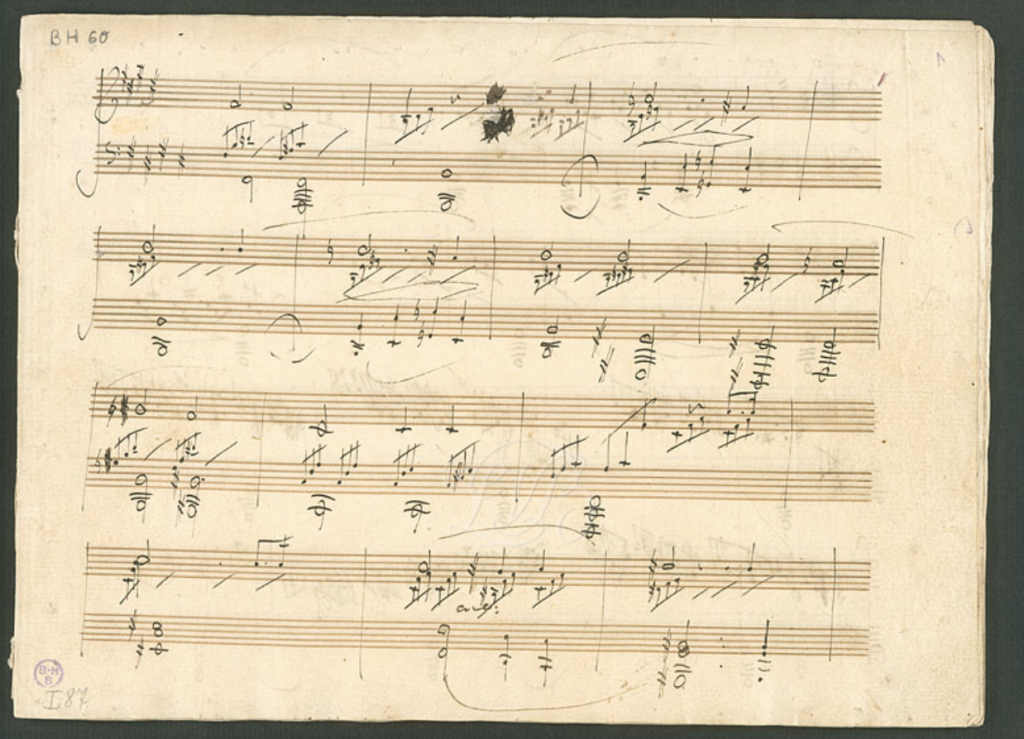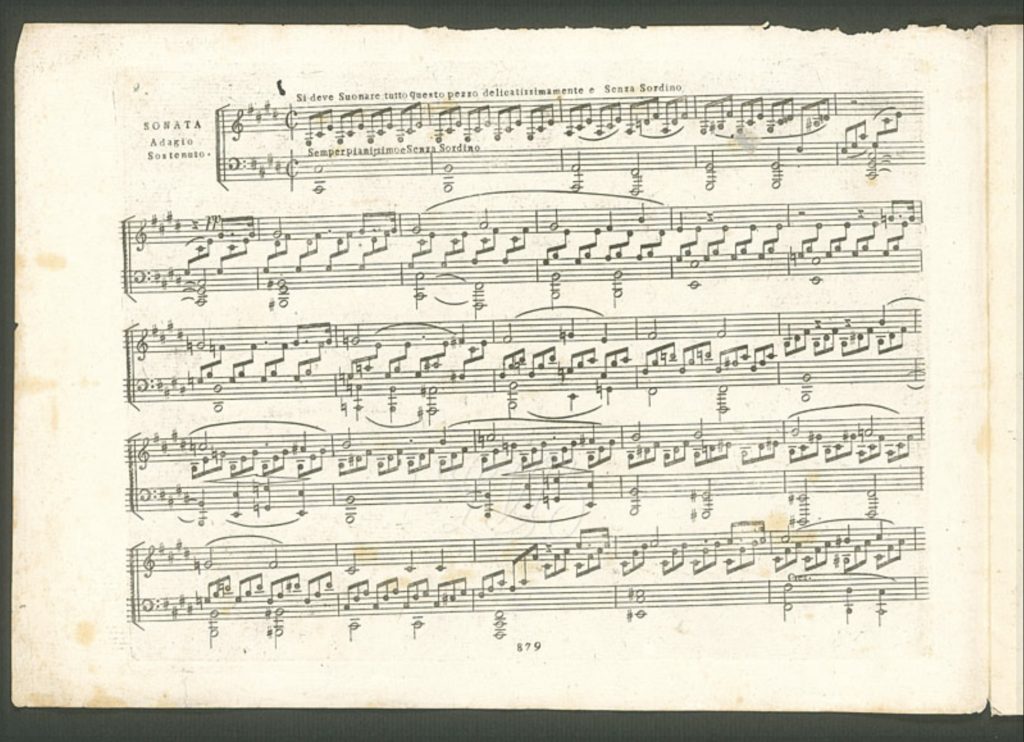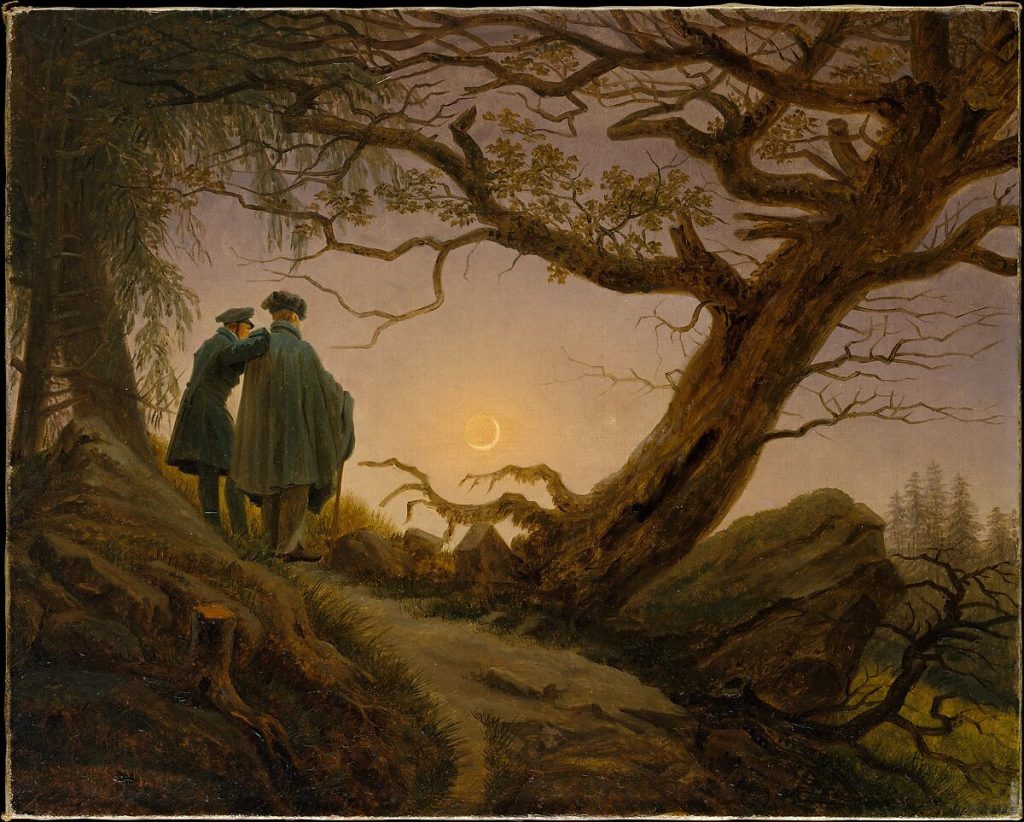The Enduring Glow of Beethoven’s Moonlight Sonata
by Dennis van Hoesel
Ludwig van Beethoven’s Moonlight Sonata stands as a timeless masterpiece, captivating audiences with its hauntingly beautiful melodies and profound emotional depth. Composed in 1801, this iconic piano work has transcended its era, leaving a permanent mark on the world of classical music. Delving into the intricacies of this musical gem, we uncover not only the technical brilliance of Beethoven as a composer and pianist but also his ability for expressing human emotion in ways that continue to resonate. With the Moonlight Sonata Beethoven broke new ground at the time by taking advantage of pioneering developments in piano making.
Beethoven’s own description of the work was Sonata quasi una fantasia, which means that he composed it in the manner of fantasy or as a sonata that sounded like a fantasy—a musical improvisation. Published as Op. 27 No. 2, it is Beethoven’s 14th piano sonata, out of a total of 32. None of the others is as well-known, even though some have special names, such as Pathetique, Appassionata, Les Adieux, Waldstein, and Pastorale. After the composer’s death, the German critic Heinrich Rellstab (1799-1860) wrote a review of the sonata, comparing the first movement to “a boat gliding on the waters of Lake Lucerne in the Swiss moonlight.” Rellstab’s name ‘Mondschein Sonate’ stuck and its longevity proves that the title was truly fitting.
Indeed, the free-flowing fantasia-like first movement has an atmospheric allure. Other contemporary critics argued that the Moonlight sonata was hardly a sonata at all, as nineteenth-century sonatas included three movements; fast-slow-fast, with the first movement in sonata form and sometimes a minuet or scherzo added as a fourth movement in second or third place. The Moonlight Sonata itself is not completely unique here, but Beethoven surely went against the grain with the slow mono thematic first movement.

Its ruminating and evocative character makes more of an introduction or prelude, which, according to musicologist Ernest Kramer, “eliminated the typical long, heavy, and fast opening sonata-allegro movement and began instead with a slow movement, focusing on the idea of a fantasy.” The distinct melodic line with dotted rhythms and accompanied by arpeggiated chords in triplets as well as the key of C-sharp minor create a hypnotic quality that lingers throughout the movement. The repeated notes also gives the melody a more sustained, or cantabile, feeling. Other fascinating features include unexpected harmonic changes and poignantly dissonant chromatic neighbors. The movement keeps listeners engaged to the point of asking, “well, where is Beethoven going to go next?”

One intriguing facet of this Adagio first movement are the pedal notations. Originally, Beethoven provided a lengthy note to the performance of the first movement. “Si deve suonare tutto questo pezzo delicatissimamente e senza sordino” (One must play this entire piece with great delicacy and without dampers). Simple, right? It would be if there hadn’t been two hundred years of modernization to pianos and how the damper pedal works. So unfortunately, it is increasingly difficult perfectly recreate the exact vision and sound that Beethoven had in mind when the Moonlight sonata was composed. Pianist and writer Charles Rosen remarks on Beethoven’s first sonata aging with time. “Since the construction of pianos changed radically during Beethoven’s lifetime, the first movement soon ceased to be heard with the particular sound that the composer can have imagined”. Thus Beethoven’s direction to release the dampeners from the strings throughout the piece only has the right effect on period pianos. Although is possible to approximate a similar effect on the modern piano, it’s hard to say if today’s performances of the piece sound anything like Beethoven what intended.
But let’s not forget about the rest of the sonata. Changing mode from the opening C# minor to D-flat major, the second movement has a more traditional ABA form, hovering somewhere between a minuet and a scherzo. The famous nineteenth-century piano virtuoso Franz Liszt (who had been presented to Beethoven as a child) famously described it as “a flower between two abysses.” This movement is primarily made up of short, two-measure melodic phrases with frequent syncopations, contrasting with the first movement.. The third movement, Presto agitato, follows a traditional sonata form finale. It begins at a piano dynamic but has turbulent arpeggios with cutting accents at the end of each phrase. The third movement is virtuosic in nature and ends with a long coda and a concerto-like cadenza. Although these movements create remarkable work, what sticks with audiences the most is the first movement.
All in all, then, the style of the Moonlight sonata was quite ahead of its time. You would more commonly find this style in later pieces by romantic composers like Schumann and Chopin, and evocative of in creating an atmosphere and mood similar to paintings like those Caspar David Friedrich. There’s a quality that Beethoven writes into the first movement where he never really lets the harmonics ‘settle’ for too long. Beethoven doesn’t even sit on the opening tonic chord of C-sharp for more than the full measure. Regardless, the way that Beethoven freely changes mode and keys through the movement-striking unexpected chords and switching to dissonant keys-creates an overarching somber mood to the first movement that is remarkably emotional and expressive. Ultimately, the fact that Beethoven engages us on so many levels (in terms of what’s happening with the melody, what’s happening with the rhythmic design of it, what’s happening harmonically, and all of this in the kind of gravitas of this adagio) is why the first movement of the Moonlight sonata has transcended to one of his most popular and well-known works.

Two Men Contemplating the Moon by Caspar David Friedrich (ca. 1825–30)